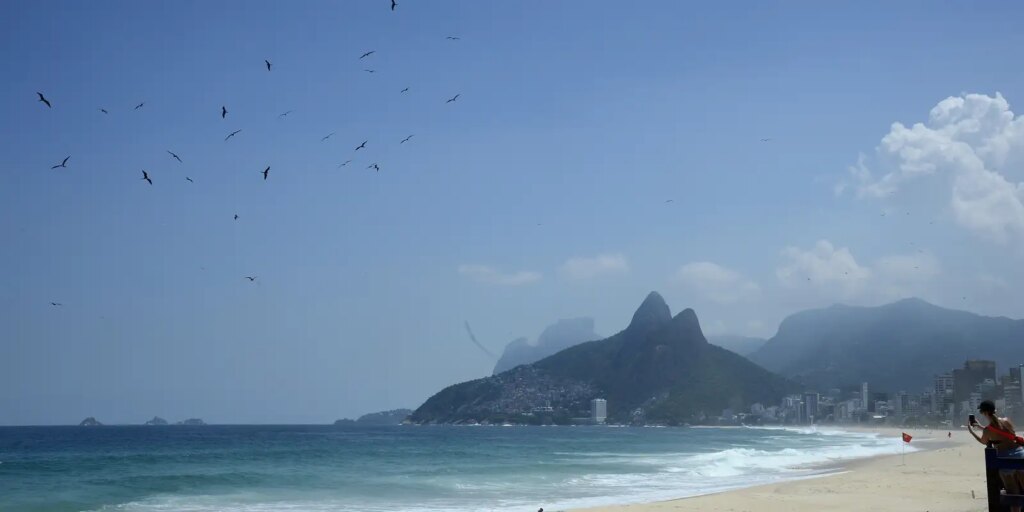
Brazil’s National Bank of Biological Samples of Albatrosses and Petrels (Baap) – managed by the Albatross Project and located in Florianópolis, in the state of Santa Catarina – ended the year 2022 with a 57.5 percent increase in the volume of samples available for consultation by researchers.![]()
![]()
Working in a structured way since 2018, it currently accounts for 10,000 biological samples from 39 species of these endangered seabirds, including blood, organs, gonads, bones, bacterial culture, parasites, skin, feathers, and various other tissues. The goal is to collect, catalog, and offer materials that will help researchers conserve these oceanic birds that come to Brazil to feed outside the breeding season.
The ornithologist responsible for Baap, Alice Pereira, technical consultant of the Albatross Project, informed Agência Brasil that, besides receiving physical samples from partners, the bank also receives information from what these partners have.
“Our idea is to integrate the collections because, many times, these institutions have the samples, but they don’t have a website or staff to fulfill the requests, and even resources to carry out research. We want to do this integration,” the ornithologist said.
The creation of the bank also met a demand from other countries. Albatrosses and petrels are migratory and colonial birds that travel the oceans to feed.
“The conservation efforts of the species are joint,” she stressed. Since 2008, Brazil has been part of the International Agreement for the Conservation of Albatrosses and Petrels (Acap), which is multilateral and aimed at promoting the conservation of albatrosses and petrels by coordinating international activities to reduce threats to these birds. The agreement was signed in 2001 in Cape Town, South Africa, and includes several countries that work together to exchange information and data to protect the birds around the world. “This demand came out of the agreement,” she stressed.
Action Plan
Brazil also houses the National Action Plan for the Conservation of Albatrosses and Petrels (Planacap), which resulted in the creation of Baap so that national experts can research what is happening to these birds in Brazilian seas.
They usually appear in Brazil at different times of the year to feed mainly on fish, mollusks, and crustaceans. The albatrosses – which feed in Brazilian oceanic waters or close to the territorial sea – come from Antarctic and sub-Antarctic islands where they breed.
The black-browed albatross (Thalassarche melanophris) and the wandering albatross (Diomedea exulans) are some examples. Petrels, on the other hand, have more varied movements, and can come from the same breeding grounds as albatrosses, or from islands in the northern hemisphere.
This year, the goal is to increase the bank’s disclosure in order to have more requests for samples, aiming to expand the demand and also encourage scientific publications. The new samples are obtained mainly by partnerships with institutions linked to the Beach Monitoring Program (PMP), hired by Petrobras, and organizations that work in the rescue and rehabilitation of seabirds from several Brazilian regions.
Brazil develops a partnership with Argentina in research on the impact of plastics on albatrosses and petrels. “We want to produce samples and give them to others,” Pereira said.
The intention is to stimulate partnerships with governments and study centers. Those interested can access the sample bank at www.baap.org.br. The Albatross Project is sponsored by Petrobras, together with the National Center for Research and Conservation of Wild Birds (Cemave) of Chico Mendes Institute for Biodiversity Conservation (ICMBio) and R3 Animal.
Researchers interested in registering samples on the site can contact baap@projetoalbatroz.org.br. For new samples to be added to the database directory it is necessary that the sample collection follows standards defined in the portal, and that specific data are sent, according to the collection protocol of the Albatross Project.
Threats
Environmental analyst at Cemave-ICMBio Patrícia Serafini pointed out that the database is public, facilitating consultation and access by researchers, as well as the conservation of the species.
She said after 10 years coordinating the National Action Plan for the Conservation of Albatrosses and Petrels, she realized that there were many gaps in knowledge about this group of oceanic birds that are difficult to access, because these animals visit islands far from the coast. “An albatross sample is something very rare, very difficult,” she stated.
For her, the bank has two functions: to facilitate scientific research and to find answers to conserve these endangered birds.
The albatrosses suffer from the harmful action of humans on the environment, such as the pollution in the oceans, especially plastic, which the birds ingest, mistaking it for food.
Another issue is their accidental capture during fishing. The birds are attracted by baits on hooks used to catch large fish far from the shore. They end up being hooked and drowned.
Reducing this accidental capture is the main mission of the Albatross Project. Created in 1990, in Santos, state of São Paulo, its main line of action is the development of research to subsidize public policies and the promotion of environmental education actions among fishermen, young people and schools.
Crédito arquivo Nacional EBC
Leia Mais em: O Maringá
